
The Franciscans are a group of related mendicant Christian religious orders within the Christian tradition. Founded in 1209 by the Italian saint Francis of Assisi, these orders include three independent orders for men, orders for nuns such as the Order of Saint Clare, and the Third Order of Saint Francis open to male and female members. They adhere to the teachings and spiritual disciplines of the founder and of his main associates and followers, such as Clare of Assisi, Anthony of Padua, and Elizabeth of Hungary. Several smaller Protestant Franciscan orders exist as well, notably in the Anglican and Lutheran traditions.
Adam Marsh was an English Franciscan, scholar and theologian. Marsh became, after Robert Grosseteste, "...the most eminent master of England."

The Order of Friars Minor Capuchin is a religious order of Franciscan friars within the Catholic Church, one of three "First Orders" that reformed from the Franciscan Friars Minor Observant, the other being the Conventuals (OFMConv). Franciscans reformed as Capuchins in 1525 with the purpose of regaining the original Habit (Tunic) of St. Francis of Assisi and also for returning to a stricter observance of the rule established by Francis of Assisi in 1209.
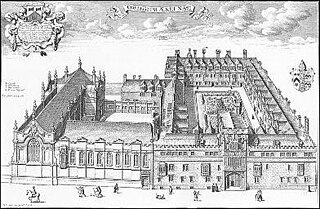
The University of Oxford has thirty-nine colleges, and four permanent private halls (PPHs) of religious foundation. Colleges and PPHs are autonomous self-governing corporations within the university. These colleges are not only houses of residence, but have substantial responsibility for teaching undergraduate students. Generally tutorials and classes are the responsibility of colleges, while lectures, examinations, laboratories, and the central library are run by the university. Students normally have most of their tutorials in their own college, but often have a couple of modules taught at other colleges or even at faculties and departments. Most colleges take both graduates and undergraduates, but several are for graduates only.
A permanent private hall (PPH) in the University of Oxford is an educational institution within the university. There are four permanent private halls at Oxford, three of which admit undergraduates. They were founded by different Christian denominations. PPHs principally differ from colleges in the sense that the latter are governed by the fellows of the college, whereas the governance of a PPH fully or partially rests with the corresponding Christian denomination.

Blackfriars is a restored Grade I listed 13th-century friary in Newcastle upon Tyne, Tyne and Wear, England, located in the city centre, close to the city's Chinatown.
Greyfriars, Grayfriars or Gray Friars is a term for Franciscan Order of Friars Minor, in particular, the Conventual Franciscans. The term often refers to buildings or districts formerly associated with the order.

Agnellus of Pisa, was an Italian Franciscan friar. As its first Minister Provincial in England (1224–1236), he is considered the founder of the Franciscans in England. His feast day is variously observed in the Catholic church on 7 May or 10 September.
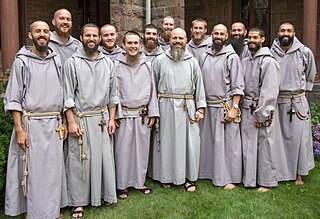
The Franciscan Friars of the Renewal is a Catholic clerical religious congregation of Pontifical Right for men founded in 1987. It follows the Capuchin Franciscan tradition.
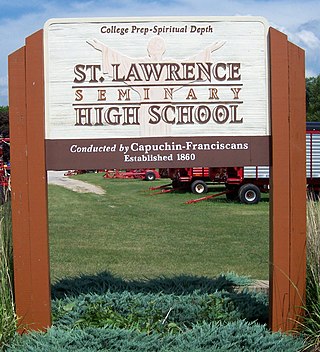
St. Lawrence Seminary High School is a preparatory high school operated by the Province of St. Joseph of the Capuchin Order at Mount Calvary, Wisconsin. The school is in the Archdiocese of Milwaukee. It is an all-male boarding school, with approximately 225 students enrolled in grades 9 through 12. The school's mission is to prepare its male students for vocations in the Catholic Church.

Greyfriars Church is an evangelical Anglican church, and former Franciscan friary, in the town centre of Reading in the English county of Berkshire. The church forms part of the Church of England's Diocese of Oxford.
Mark Turnham Elvins OFMCap was Warden of Greyfriars, Oxford, until its closure in 2008.

Blackfriars Hall is a permanent private hall of the University of Oxford. Unlike a college, a Hall is owned and governed by an outside institution and not by its fellows. Although historically a centre for the study of theology and philosophy informed by the intellectual tradition of St Thomas Aquinas, it now admits men and women of any faith to a wide range of postgraduate degree programmes in the humanities and social sciences. The current Regent of Blackfriars is Fr. John O'Connor, O.P..

Greyfriars in Canterbury was the first Franciscan friary in England.
Greyfriars Nottingham was a Franciscan friary in Nottinghamshire, England. It was founded c. 1224–1230, and dissolved in 1539 as part of King Henry VIII's Dissolution of the Monasteries. The site of the friary is now occupied by the Broadmarsh Shopping Centre.
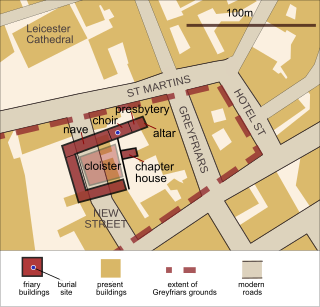
Greyfriars, Leicester, was a friary of the Order of Friars Minor, commonly known as the Franciscans, established on the west side of Leicester by 1250, and dissolved in 1538. Following dissolution the friary was demolished and the site levelled, subdivided, and developed over the following centuries. The locality has retained the name Greyfriars particularly in the streets named "Grey Friars", and the older "Friar Lane".
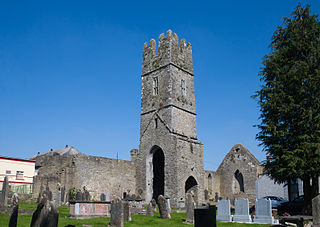
Roscrea Friary is a ruined medieval Franciscan friary and National Monument located in Roscrea, County Tipperary, Ireland. It is on Abbey Street, in the west end of Roscrea, on the north bank of the River Bunnow. The Friary was founded in the 15th century by Greyfriars (Franciscans) and later destroyed by British soldiers. What remains are the north and east walls and the bell-tower.

The Friary, formally known as Blessed Agnellus of Pisa Friary, formerly All Saints Convent or St John's Home is a centre of formation for the Franciscan Order of Friars Minor Conventual in Cowley, Oxford, England. The building was constructed in 1873 as the convent of the Anglican Society of All Saints Sisters of the Poor. It is situated between St Mary's Road and Cowley Road, next to St John's Care Home and Helen & Douglas House. The friary and its chapel are Grade II listed buildings.

















